He Xiaopeng: In the next 20 years, flying cars are expected to reach 20% of the commercial scale of automobiles.
'The global automotive market is worth approximately 10 trillion US dollars annually, while the flying car market could reach 2 trillion US dollars, representing a huge market opportunity over the next 20 years.' At the China EV100 Forum (2025) High-Level Forum held on March 29, He Xiaopeng, Chairman and CEO of XPeng Motors, shared insights on XPeng's prospects and plans in the low-altitude economy.
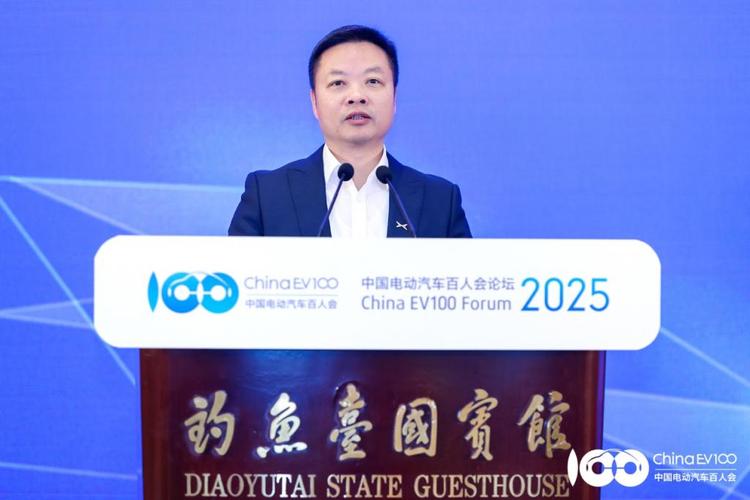
Chairman and CEO of XPeng Motors, He Xiaopeng
He Xiaopeng mentioned that over the past decade, several new automakers have consistently advocated that electrification and intelligence are the future. Today, it is gratifying to see the entire industry beginning to recognize the shift toward intelligence. Facing the next decade, these new automakers have gradually progressed from small startups to the entrepreneurial phase of scaling from 1 to 2.
New Decade, XPeng Motors' Three Curves
He Xiaopeng first shared the direction of Xpeng Motors for the next ten years. He mentioned that Xpeng insists on AI as its core and aims to explore the global mobility ecosystem. Therefore, in the new decade, Xpeng Motors has three key trajectories: the first trajectory is how to integrate AI with automobiles to create AI cars; the second trajectory is how to truly expand from China to the global market, with a goal of entering 60 countries and regions this year; the third trajectory is to deploy and explore the ecosystem of embodied intelligence.
Over the past few months, XPeng Motors has achieved the highest delivery volume among new energy vehicle startups and ranked first in exports among Chinese new energy vehicle manufacturers. Notably, XPeng has positioned itself in the mid-to-high-end segment during its global expansion. Last year, it topped the list of Chinese automakers in the European market for vehicles priced above 40,000 euros and plans to focus primarily on models priced above 35,000 euros in the future.
In the next 20 years, flying cars will be a huge market.
"In the next 20 years, it will be a massive market," He Xiaopeng pointed out that low-altitude flight will have a huge market size. In the next 10-20 years, global sales in the low-altitude flight market will be 3%-5% of today's automobile scale, and sales revenue will account for nearly 20% of the automobile market revenue. The global automobile market is about 10 trillion US dollars annually, and flying cars will account for 2 trillion US dollars.

Xpeng's ecological enterprise, Xpeng Huitian, has invested over 10 billion yuan in the past 11 years, with 1,400 people working on flying car research and development. In 2025, 3 billion yuan will be invested. At the same time, Huitian and Xpeng are conducting core full-stack research and development, including the three electric systems, composite materials, flight control navigation, and air intelligent driving for flying cars. He Xiaopeng mentioned that each flying car uses 300 kilograms of carbon fiber, and once mass production begins in 2026, Xpeng will become the largest automotive factory in the world using carbon fiber.
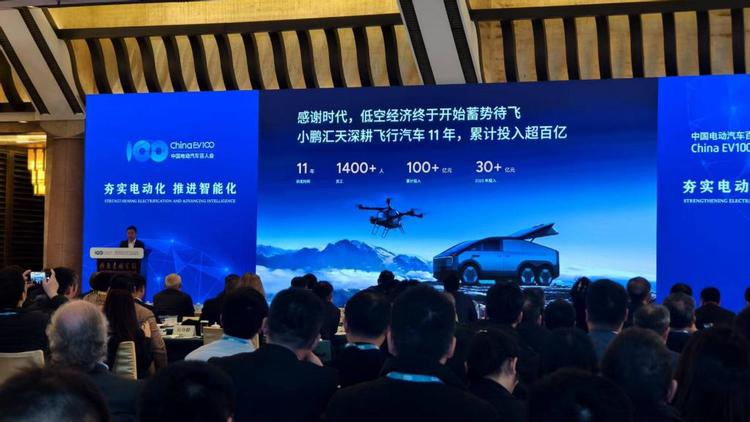
Land aircraft carrier to be delivered in 2026.
Currently, Xiaopeng Huitian has two products. The first is a detachable flying car designed for short-distance sightseeing, called the Land Aircraft Carrier, which can automatically fold into the trunk of a car and will become the world's first detachable flying car, with a flight distance of less than 30 kilometers. The second is an under-development long-range tilt-rotor aircraft with a range of over 500 kilometers, which can only fly and cannot be driven on the road.
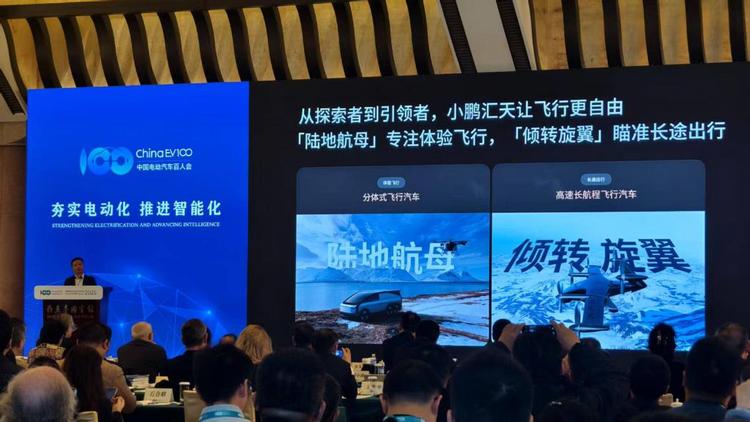
In terms of production capacity layout, Xiaopeng Huitian's manufacturing base has already started construction in Guangzhou, Guangdong Province, with an annual production capacity of 10,000 units. It is expected to be completed in the third quarter of 2025, with pre-sales of the "land aircraft carrier" starting in the third quarter, flight certification in the fourth quarter, and official launch and large-scale delivery in 2026.
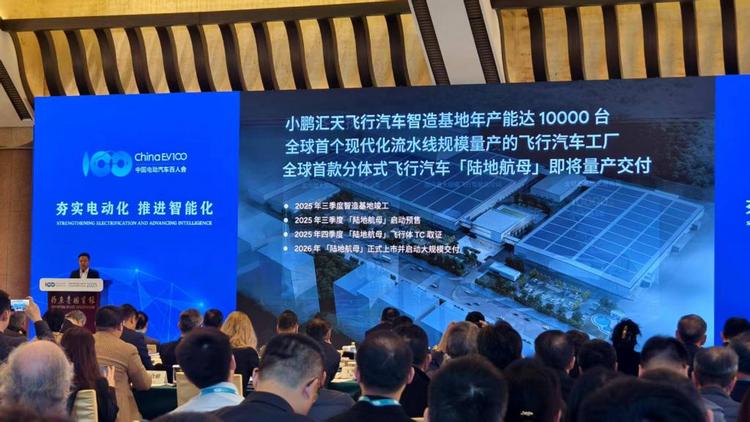
At the same time, He Xiaopeng also stated that XPeng Huitian is promoting training for flying licenses, with the hope of having more than 200 flying camps by the end of this year and over 500 by 2026. The most important requirement for flying is airworthiness certification. In March 2024, XPeng Huitian's "land aircraft carrier" flight vehicle type certificate (TC) application was accepted by the Civil Aviation Administration, and in March of this year, they released the "X3-F aircraft specific conditions draft for comments." After obtaining airworthiness certification, we will see further information about flying cars.
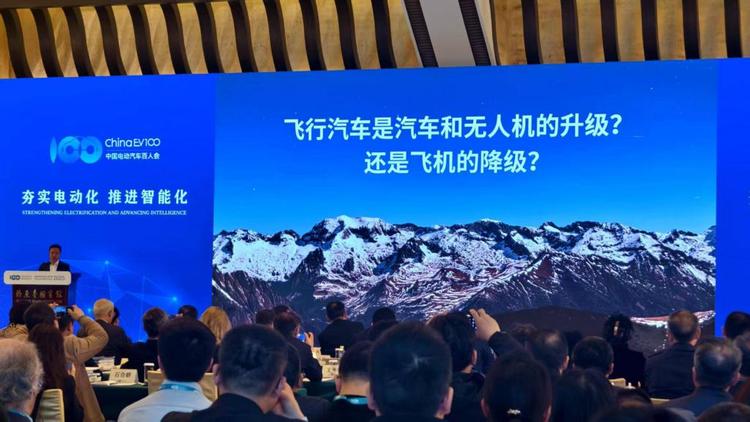
'Is the flying car an upgraded version of automobiles or autonomous vehicles, or a downgraded version of aircraft?' He Xiaopeng made an appeal regarding the positioning of flying cars from a policy management perspective. He stated that flying cars should initially operate in uninhabited areas—below, without any man-made structures—such as rivers, deserts, mountains, wastelands, and oceans, to ensure safer and more scalable flight operations. He hopes that the government will coordinate the flying car industry, treating it as an upgraded version of today's drones in the future, and establish a flexible regulatory framework. This would enable the low-altitude economy to replicate the positive cycle seen in China's new energy vehicle industry over the past decade—from very small to large today, and to strong in the next 10 years—over the next 10 to 20 years.
【Copyright and Disclaimer】The above information is collected and organized by PlastMatch. The copyright belongs to the original author. This article is reprinted for the purpose of providing more information, and it does not imply that PlastMatch endorses the views expressed in the article or guarantees its accuracy. If there are any errors in the source attribution or if your legitimate rights have been infringed, please contact us, and we will promptly correct or remove the content. If other media, websites, or individuals use the aforementioned content, they must clearly indicate the original source and origin of the work and assume legal responsibility on their own.
Most Popular
-

List Released! Mexico Announces 50% Tariff On 1,371 China Product Categories
-

Nissan Cuts Production of New Leaf EV in Half Due to Battery Shortage
-

New Breakthrough in Domestic Adiponitrile! Observing the Rise of China's Nylon Industry Chain from Tianchen Qixiang's Production
-

Dow, Wanhua, Huntsman Intensively Raise Prices! Who Controls the Global MDI Prices?
-

Mexico officially imposes tariffs on 1,400 chinese products, with rates up to 50%






